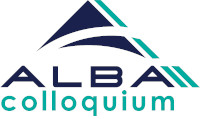- https://www.cells.es/ca/actualitat/agenda/esdeveniments-publics-dalba/alba-ii-colloquium-12-synchrotron-radiation-and-building-materials-adapting-the-techniques-to-relevant-samples-and-not-the-other-way-around
- ALBA II Colloquium #13 - Synchrotron Radiation and Building Materials: Adapting the techniques to relevant samples and not the other way around
- 2021-05-31T16:00:00+02:00
- 2021-05-31T17:00:00+02:00
- Miguel Ángel García Aranda (Universidad de Málaga)
- Què
- events
- Quan
-
Mai 31, 2021
de 16:00 a 17:00 (Europe/Madrid / UTC200) - On
- ALBA (virtual event)
- Nom de contacte
- ihernandez@cells.es
- URL de l'esdeveniment
- Lloc web relacionat
- Afegeix un esdeveniment al calendari
-
 iCal
iCal
Abstract
Cement manufacturing is responsible for ~7% of the anthropogenic CO2 emissions and hence, decreasing the CO2 footprint of cement production, in a sustainable, safe, and cost-effective way, is a top priority. It is also key to develop more durable binders as the estimated world concrete stock is 315 Gt which currently results in ~4 Gt/yr of concrete demolition waste (CDW). Moreover, models under development predict a sharp increase of CDW to 20–40 Gt/yr by 2100. This amount could not be reprocessed as aggregates for new concretes as such volumes would be more than two times the predicted need.
These two challenges (decreasing CO2 emissions to our atmosphere and debris to our landfills) are easy to state but far from straightforward to achieve. Concretes have very complex hierarchical microstructures. The largest components are coarse aggregates with dimensions bigger than 2 cm and the smallest ones are amorphous components and the calcium silicate hydrate gel with nanoparticle sizes smaller than 4 nm. To fully understand the properties of current and new binders and to optimize their performances, a sound description of their phase/constituent evolution and spatially-resolved contents is mandatory. However, there is not a tomographic technique that can cover the spatial range of heterogeneity and features of concretes and mortars, i.e. 7 orders of magnitude. This can only be attained within a multitechnique approach overlapping the spatial scales in order to build an accurate picture of the different microstructural features. Furthermore, hydrating samples are plenty of water resulting in relatively low contrast and it can undergo ‘radiation damage’ under strong X-ray beams.
Here, I will present current examples or our research in cementitious materials, 5 years old or newer, to highlight the usage of SR techniques in this field with focus on helping to develop new low CO2 cements. Examples of powder diffraction (analysed by the Rietveld method), total scattering data (analysed by pair distribution function), X-ray absorption and phase contrast microtomographies, and far-field and near-field ptycho-nanotomographies (analysed by segmentation with different algorithms/approaches including machine learning) will be shown and discussed. It is underlined that after more than 100-year research in cements, a lot of is known and the results of SR techniques should frame within the overall knowledge and then, some advances are expected. Buildings and infrastructures must have service lives of more than 100 years and so we cannot adapt the samples to the techniques but the synchrotron tools should cope with relevant samples. Be aware that we have to be able to answer to the final remark of people working with tons of cements and concretes: “and so, what”. This is explicitly stated as new SR submicrometer techniques commonly need a ‘sample preparation step’ which is incompatible with extracting results valid for field applications. Here, a long way is needed for having appropriated fields of views. To end, I will give my personal view about the short-term future of synchrotron radiation techniques applied to cementitious materials.
Key words: Powder diffraction and Rietveld analysis, X-ray micro-tomographies, X-ray ptycho nano-tomographies.

About ALBA II Colloquium
The series ALBA II Colloquium, addressed to the scientific user's community of synchrotron radiation, is aimed at inspiring and promoting fruitful ideas and information exchange about the future development of ALBA II facility.




